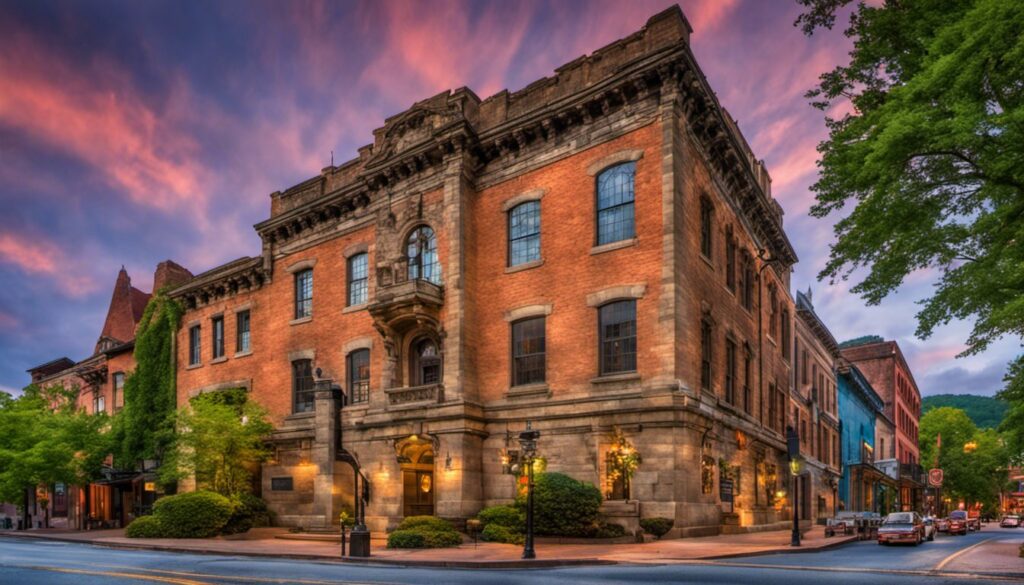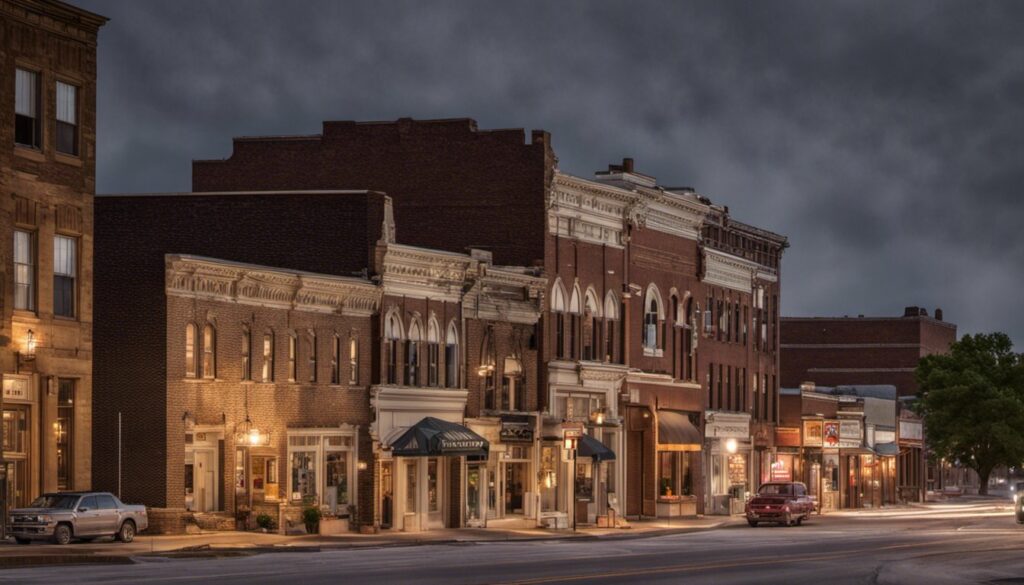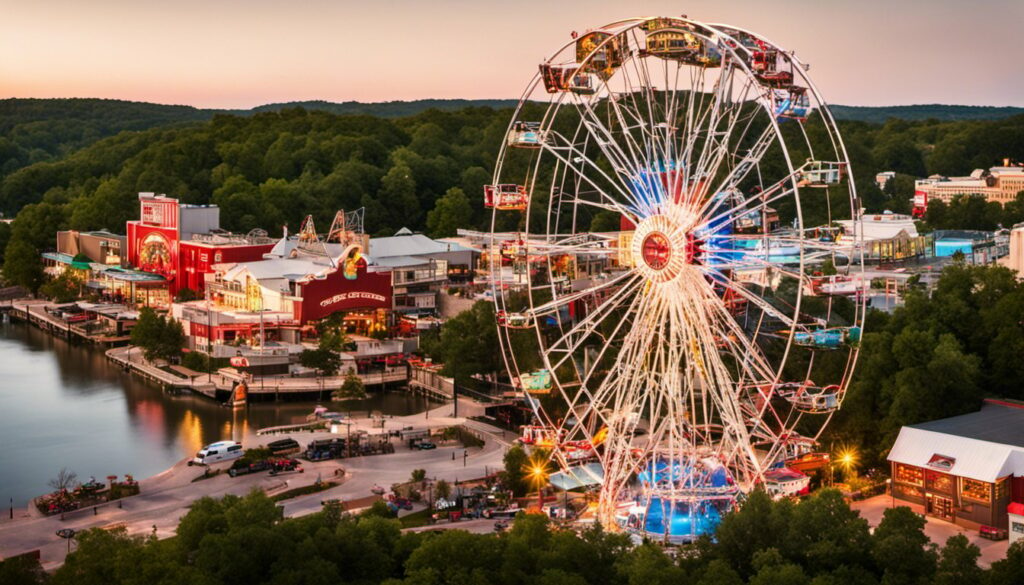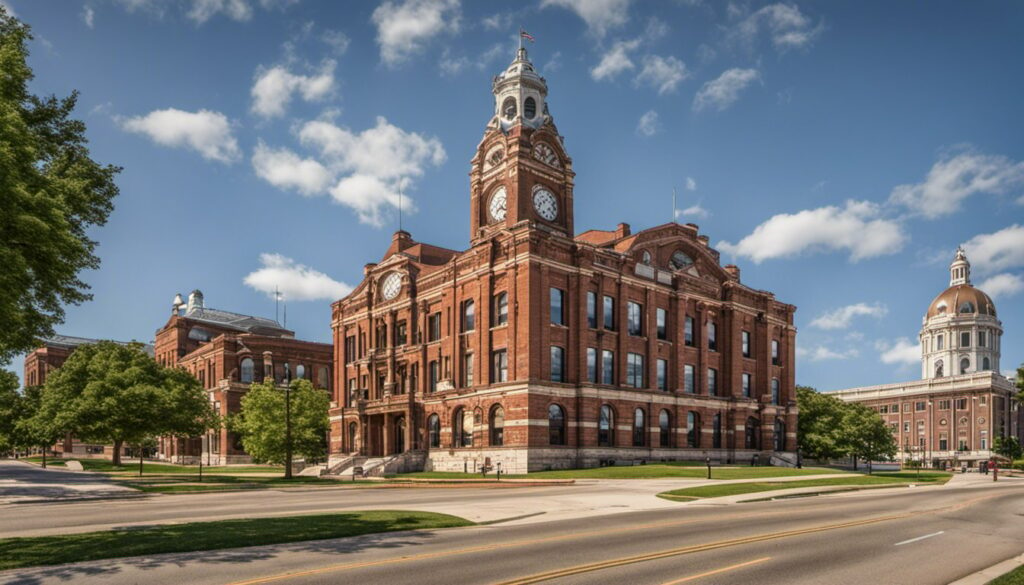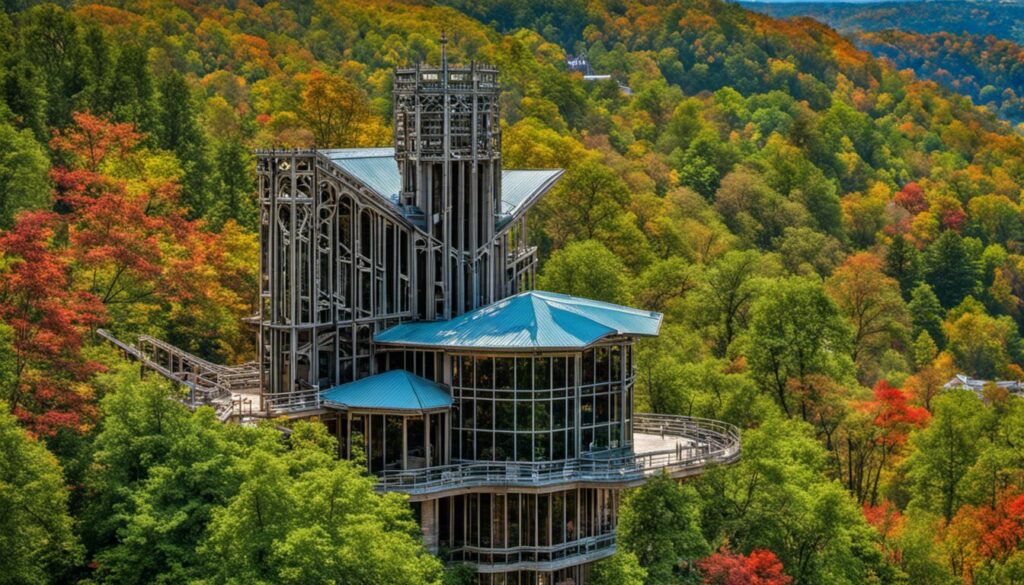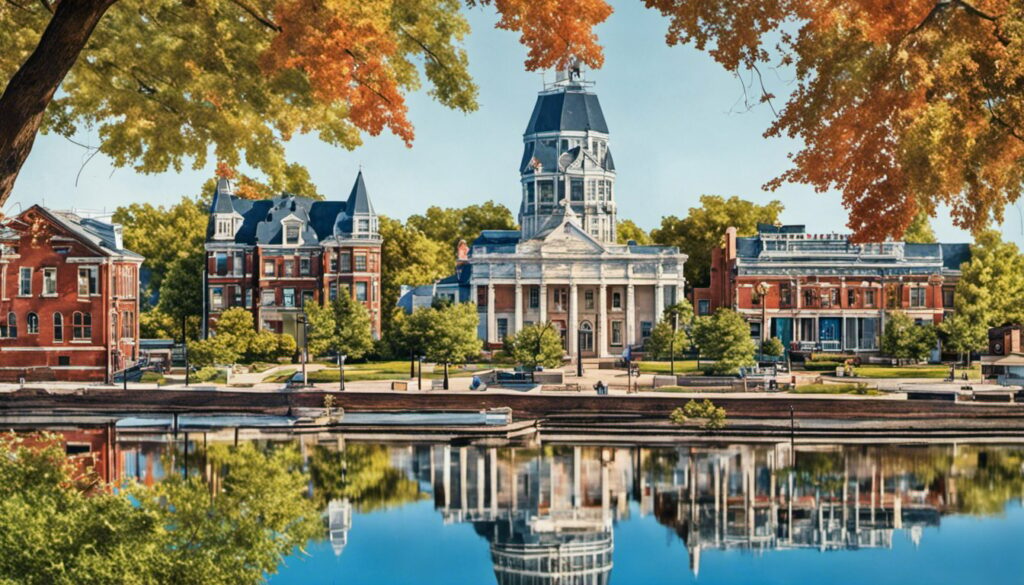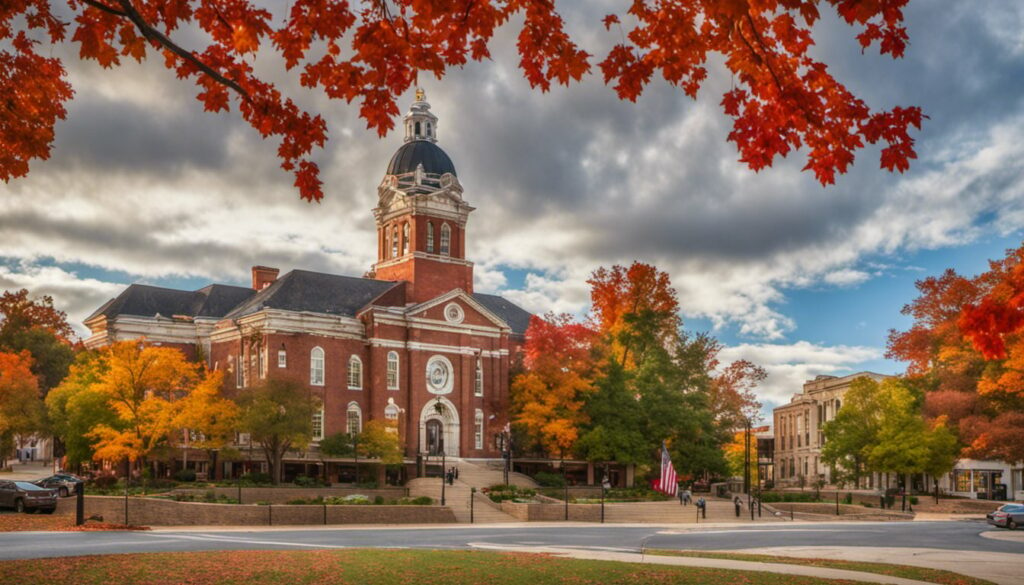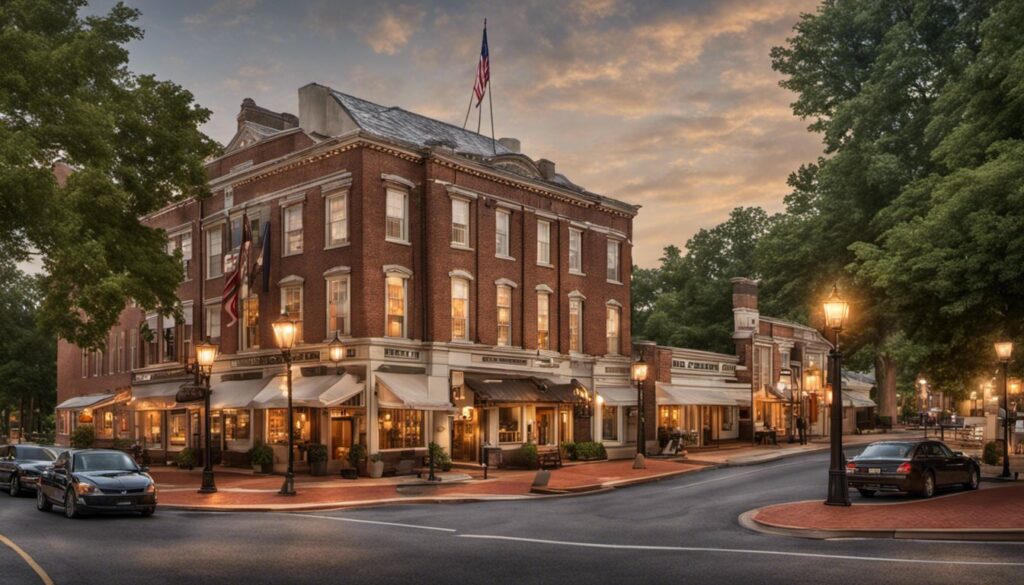Table Of Content
Explore Ohio’s Rich History: Historical Sites and Famous Landmarks Await!
Ohio is a state with a rich history, and its landmarks and historical sites are a testament to its past. From the National Historic Landmarks to the lesser-known sites, Ohio has plenty to offer history buffs. Whether you are a resident or a visitor, exploring these landmarks is a great way to learn about Ohio’s past and appreciate its present.
Ohio’s counties and their historic significance are a great starting point for exploring the state’s history. Each county has its unique story to tell, and visiting these sites can help you understand how Ohio became the state it is today. From the Hopewell Culture National Historic Park to the Ohio Statehouse Museum, there is something for everyone.
Ohio’s role in aviation history is another fascinating aspect to explore. The Wright Brothers, who hailed from Dayton, Ohio, are credited with inventing the first successful airplane. Exploring the Wright Brothers National Museum and Huffman Prairie Flying Field can give you a glimpse into the early days of aviation.
Key Takeaways
- Ohio is home to a variety of historical sites and landmarks that are worth exploring.
- The state’s counties and their historic significance are a great starting point for exploring Ohio’s rich history.
- Ohio’s role in aviation history is another fascinating aspect to explore.
Historical Sites in Ohio
Ohio is home to a wealth of historical sites, each with its own unique story to tell. From the Ohio Statehouse to the Newark Earthworks, there is no shortage of fascinating destinations to explore. Here are a few of the most notable historical sites in Ohio:
Ohio Statehouse
The Ohio Statehouse is a stunning example of Greek Revival architecture and serves as the seat of government for the state of Ohio. Completed in 1861, the building is home to the Ohio General Assembly and the offices of the governor, lieutenant governor, and secretary of state. Visitors can take a guided tour of the Statehouse and learn about its history and significance.
Paul Laurence Dunbar House
Poet Paul Laurence Dunbar was born in Dayton, Ohio, in 1872, and his childhood home has been preserved as a museum dedicated to his life and work. The house contains original furnishings and artifacts, as well as exhibits on Dunbar’s literary achievements and cultural impact.
Warren G. Harding Home
The Warren G. Harding Home in Marion, Ohio, was the residence of the 29th president of the United States. Visitors can tour the home and learn about Harding’s life and career, as well as the social and political climate of the early 20th century.
Thomas A Edison Birthplace Museum
The Thomas A Edison Birthplace Museum in Milan, Ohio, is the childhood home of the famous inventor. The museum contains exhibits on Edison’s life and work, as well as artifacts and inventions from his career.
Rutherford B. Hayes Home
The Rutherford B. Hayes Home in Fremont, Ohio, was the residence of the 19th president of the United States. The home has been preserved as a museum and contains original furnishings and artifacts, as well as exhibits on Hayes’s life and career.
Fort Jefferson
Fort Jefferson is a historic military fort located in Darke County, Ohio. The fort was built in 1869 and served as a base of operations during the Indian Wars. Visitors can tour the fort and learn about its history and significance.
Lockington Locks
The Lockington Locks is a historic canal system located in Miami County, Ohio. The locks were built in the 1830s as part of the Miami and Erie Canal and played an important role in the development of the state’s transportation infrastructure.
Newark Earthworks
The Newark Earthworks is a complex of ancient Native American earthworks located in Newark, Ohio. The earthworks were built by the Hopewell culture between 100 BC and AD 500 and are considered one of the most impressive examples of prehistoric architecture in the world.
Whether you’re a history buff or just looking for a unique and educational day trip, Ohio’s historical sites and landmarks offer something for everyone.
Famous Landmarks in Ohio
If you’re looking for famous landmarks in Ohio, you won’t be disappointed. From historical sites to natural wonders, Ohio has something for everyone. Here are some of the most famous landmarks in Ohio that you won’t want to miss.
Cincinnati Music Hall
If you’re a music lover, you won’t want to miss the Cincinnati Music Hall. Built in 1878, this stunning building is home to the Cincinnati Symphony Orchestra, the Cincinnati Opera, and the Cincinnati Pops Orchestra. With its Gothic architecture and stunning acoustics, the Cincinnati Music Hall is a must-visit landmark in Ohio.
U.S. Grant Boyhood Home
If you’re a history buff, you won’t want to miss the U.S. Grant Boyhood Home. Located in Georgetown, Ohio, this home was the boyhood home of Ulysses S. Grant, the 18th President of the United States. The home has been restored to its 1820s appearance and is open to the public for tours.
Perry’s Victory and International Peace Memorial
Located on South Bass Island in Lake Erie, Perry’s Victory and International Peace Memorial commemorates the Battle of Lake Erie during the War of 1812. The monument is 352 feet tall and offers stunning views of Lake Erie and the surrounding islands.
Tomb of William Henry Harrison
Located in North Bend, Ohio, the Tomb of William Henry Harrison is the final resting place of the 9th President of the United States. The tomb is a beautiful neoclassical structure and is open to the public for tours.
Inscription Rock Petroglyphs
Located in the Cuyahoga Valley National Park, Inscription Rock Petroglyphs is a collection of Native American rock carvings that date back to the 17th century. The carvings depict animals, people, and other symbols and are a fascinating look into the history of the region.
Whether you’re a music lover, a history buff, or just looking for something unique to do in Ohio, these famous landmarks are sure to impress. Don’t miss your chance to see these amazing Ohio attractions.
National Historic Landmarks
Ohio is home to numerous National Historic Landmarks recognized by the National Park Service. These landmarks are structures, districts, objects, and similar resources that have played an important role in Ohio’s history and culture. Here are a few of the National Historic Landmarks that you should visit:
Campus Martius Museum
Located in Marietta, Campus Martius Museum is a historic site that showcases the history of Ohio’s early pioneers. The museum features exhibits on the Ohio River, the Northwest Territory, and the early settlement of Marietta. You can also explore the Rufus Putnam House, which is the oldest house in Ohio.
Fallen Timbers Battlefield
The Fallen Timbers Battlefield is a historic site that commemorates the Battle of Fallen Timbers, which was fought between the United States and a coalition of Native American tribes in 1794. The battlefield is located in Maumee and features a visitor center, walking trails, and a monument dedicated to the soldiers who fought in the battle.
Fort Meigs
Fort Meigs is a historic site located in Perrysburg that played a vital role in the War of 1812. The fort was built by General William Henry Harrison to defend against British attacks on the Ohio River. Today, visitors can explore the fort’s museum, watch historical reenactments, and walk through the reconstructed fortifications.
National Veterans Memorial and Museum
The National Veterans Memorial and Museum is a landmark located in Columbus that honors the sacrifices of America’s veterans. The museum features exhibits on the experiences of veterans from all branches of the military and from all eras of American history. Visitors can also take part in interactive exhibits and attend special events throughout the year.
Ohio’s National Historic Landmarks are a testament to the state’s rich history and culture. Whether you’re interested in Ohio’s early pioneers, the War of 1812, or the sacrifices of America’s veterans, these landmarks offer a unique opportunity to explore the past and learn about the people and events that have shaped Ohio’s history.
Ohio’s Rich Heritage
Ohio has a rich heritage that is deeply rooted in its history. From the War of 1812 to the Civil War, and the Fort Ancient Cultures, Ohio has a lot of historical sites and landmarks that tell the story of its past.
War of 1812
Ohio played a significant role in the War of 1812, which was fought between the United States and Britain. Fort Meigs, located in Perrysburg, Ohio, was the site of two battles during the war. The fort played a crucial role in defending the United States against British forces. Another important site is the Perry’s Victory and International Peace Memorial located on South Bass Island. The monument commemorates the Battle of Lake Erie, which was a decisive victory for the United States.
Civil War
Ohio played a significant role in the Civil War, which was fought between 1861 and 1865. The state provided more than 300,000 soldiers to the Union Army, which was the third-highest number of soldiers provided by any state. The Ohio Statehouse in Columbus was an important site during the Civil War. The building was used as a recruiting station, and it also served as the headquarters for Ohio’s governor, William Dennison.
Fort Ancient Cultures
The Fort Ancient Culture was a prehistoric Native American civilization that lived in the Ohio Valley from about 1000 to 1650 AD. The Fort Ancient State Memorial, located in Warren County, Ohio, is a significant site that preserves the remains of this culture. The site includes a reconstructed village, a museum, and a 9,000-foot earthen wall that was built by the Fort Ancient people.
Ohio’s heritage is rich and diverse, and there are many historical sites and landmarks that tell the story of its past. Whether you are interested in the War of 1812, the Civil War, or the Fort Ancient Cultures, Ohio has something to offer. Visit these sites to learn more about Ohio’s history and gain a deeper appreciation for the state’s heritage.
Ohio’s Counties and Their Historic Significance
Ohio is home to many historic sites and landmarks, each with their own unique story to tell. The state is divided into 88 counties, each with its own history and cultural significance. Here are a few counties and their historic landmarks that you should definitely check out:
Hamilton County
Hamilton County is home to Cincinnati, the Queen City of the West. Founded in 1788, Cincinnati played a key role in the Underground Railroad, which helped slaves escape to freedom. The Harriet Beecher Stowe House, located in the city, was the home of the author of Uncle Tom’s Cabin, a novel that helped to galvanize the abolitionist movement. Other notable landmarks in Hamilton County include the Union Terminal, the Cincinnati Art Museum, and the National Underground Railroad Freedom Center.
Allen County
Allen County is located in the northwestern part of Ohio and is home to Lima, the county seat. The county is known for its rich history in the oil industry, as well as its contributions to the Underground Railroad. The Lima Locomotive Works, which produced steam locomotives for over 70 years, is a notable landmark in the area. Other landmarks include the Allen County Museum and the MacDonell House, which was a stop on the Underground Railroad.
Ross County
Ross County is located in the south-central part of Ohio and is home to Chillicothe, the state’s first capital. The Hopewell Culture National Historical Park, located in the county, contains some of the most well-preserved examples of Hopewellian culture in the world. Other notable landmarks in Ross County include the Adena Mansion and Gardens, the Chillicothe Paints Baseball Stadium, and the Ross County Heritage Center.
Wood County
Wood County is located in the northwestern part of Ohio and is home to Bowling Green, the county seat. The county is known for its contributions to the glass industry, as well as its historic architecture. Notable landmarks in Wood County include the Carter Historic Farm, the Wood County Historical Center and Museum, and the Simpson Garden Park.
Miami County
Miami County is located in the western part of Ohio and is home to Troy, the county seat. The county is known for its rich history in aviation, as well as its contributions to the Underground Railroad. Notable landmarks in Miami County include the WACO Air Museum, the Hobart Arena, and the Miami County Courthouse.
Perry County
Perry County is located in the southeastern part of Ohio and is home to New Lexington, the county seat. The county is known for its coal mining industry, as well as its contributions to the Underground Railroad. Notable landmarks in Perry County include the Perry County Courthouse, the New Lexington Opera House, and the Perry County Historical Society.
Warren County
Warren County is located in the southwestern part of Ohio and is home to Lebanon, the county seat. The county is known for its rich history in the early settlement of Ohio, as well as its contributions to the Underground Railroad. Notable landmarks in Warren County include the Glendower Historic Mansion, the Warren County History Center, and the Harmon Museum and Art Gallery.
Ohio’s counties are full of history and cultural significance. Whether you’re interested in aviation, the Underground Railroad, or the early settlement of Ohio, there’s something for everyone to explore and learn about.
Ohio’s Role in Aviation History
Ohio has played a significant role in aviation history, and there are several landmarks and historical sites in the state that commemorate this fact. Here are a few of the most notable:
Neil Armstrong and Apollo 11
Ohio native Neil Armstrong was the first person to walk on the moon as part of the Apollo 11 mission in 1969. Armstrong was born in Wapakoneta, Ohio, and the Armstrong Air & Space Museum in his hometown is dedicated to his life and achievements. The museum features exhibits on the history of aviation and space exploration, as well as artifacts related to Armstrong’s life and career.
Pro Football Hall of Fame
While not directly related to aviation, the Pro Football Hall of Fame in Canton, Ohio, is a must-visit destination for sports fans. The Hall of Fame features exhibits on the history of professional football, as well as interactive displays and memorabilia. The Hall of Fame also hosts a variety of events throughout the year, including the annual Enshrinement Ceremony, which honors the newest members of the Hall of Fame.
Ohio’s contributions to aviation history are also worth exploring. The Wright Brothers, who invented the first successful airplane, were from Ohio, and the Dayton Aviation Heritage National Historical Park in Dayton, Ohio, is dedicated to their legacy. The park includes several sites related to the Wright Brothers, including the Wright Brothers National Museum and the Wright Cycle Company.
Other notable aviation sites in Ohio include the National Museum of the United States Air Force in Dayton, which features a vast collection of aircraft and exhibits on the history of aviation, and the National Aviation Heritage Area, which encompasses eight counties in Ohio and is home to several aviation-related landmarks and museums.
Ohio’s role in aviation history is a fascinating topic, and exploring the state’s landmarks and historical sites related to aviation is a great way to learn more about this important part of our history.
Frequently Asked Questions
What are some must-see historical sites in Ohio?
Ohio is home to several must-see historical sites, including the Adena Mansion and Gardens in Chillicothe, the William Howard Taft National Historic Site in Cincinnati, and the National Museum of the United States Air Force in Dayton.
Which famous people from Ohio have landmarks dedicated to them?
Ohio is the birthplace of several famous people who have landmarks dedicated to them, including the Wright Brothers, Thomas Edison, and Neil Armstrong.
What are some interesting facts about Ohio’s history?
Did you know that Ohio was the first state to enact laws protecting working women in 1852? Or that the first ambulance service in the United States was established in Cincinnati in 1865? Ohio was also the birthplace of eight U.S. presidents, including Ulysses S. Grant, William Howard Taft, and James A. Garfield.
What are some of the most scenic attractions in Ohio?
Ohio is home to several scenic attractions, including Hocking Hills State Park, Lake Erie Islands, and Cuyahoga Valley National Park. Visitors can enjoy hiking, biking, and kayaking while taking in the beautiful scenery.
What are some events that celebrate Ohio’s history?
Ohio hosts several events throughout the year that celebrate its rich history, including the Ohio State Fair, the Ohio Renaissance Festival, and the Ohio History Connection’s annual Ohio Open Doors event.
What is the significance of the Ohio state flag?
The Ohio state flag features a blue triangle representing Ohio’s hills and valleys, with 17 stars symbolizing Ohio’s status as the 17th state to enter the Union. The stripes represent Ohio’s roads and waterways, while the white circle represents the state’s nickname, “The Buckeye State.”



